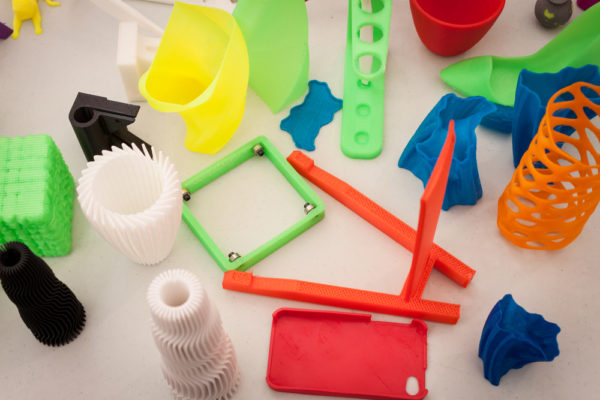Even with tight budgets, it’s possible to repurpose your libraries or media centers into 21st century makerspaces
For many of us in education, budget cuts are always a possibility. The challenge becomes how to make our services and programs truly stand out to stakeholders, so that we’re truly transforming what we’re doing to meet the needs of our students in today’s world. With that in mind, we recently re-introduced our media centers to our district community, Brevard County Schools in Florida, as a valuable and integral part of a student’s education that supports 21st-century skills
Our “a-ha” moment about how to make this rebrand a reality came at a tech conference. With a colleague, the two of us stopped at a 3D printer booth and we both had the same vision. We talked about repurposing the media centers into Innovation Centers where students had the opportunity to experience STEM activities through a maker format. We were excited about the chance to give our students the opportunity to truly envision, design, create, and walk away with a 3D printed model.
We approached the Brevard Schools Foundation and shared our vision. At the Foundation’s recommendation, we applied for and won a grant from Northrop Grumman. In developing a timeline and plan for implementing the grant, we identified six schools where the changes would start and made sure that they were willing and able to support this new program. One of our goals was to make the program replicable and sustainable. This was our chance to create a model that could be rolled out to other schools in the future.
We conducted a great deal of research on the internet, at conferences, and through collaboration with others who were already implementing a similar program. We are fortunate to live in area with a large technical industry, and we capitalized on that by reaching out and collaborating with them. Northrop Grumman not only provided the grant, but helped the sustainability of this project through their outreach program.
In terms of products for the project, we decided to fund items in categories such as 3D printing, coding and robotics, building and construction, electronics and circuits, consumables, and other materials. We knew that we also needed to help provide a starting point in terms of rethinking traditional furniture and replacing it with collaborative pieces. Some of our schools needed additional devices like tablets or laptops, and we were able to provide a few for each school.
Our budget didn’t allow for a lot of furniture, so we selected some inexpensive, adjustable tables with whiteboards on top. We picked simple chairs in bright colors to make the space more inviting and lively. We purchased three daVinci Jr 3D printers and a variety of mobile devices for each space. We also bought a 70” Promethean ActivPanel for each of our Innovation Centers. These panels help students to collaborate on projects, 3D modeling, and communication.
Next page: Our 5 best tips for getting started
With the makerspaces, our students are now working through various stages of the design thinking process. Our schools are already immersed in Engineering Design challenges, and the maker program gives them a new way to work that into challenges and other curriculum areas. On a typical day in one of our Innovation Centers, you will see students working with robotics, coding, circuitry, 3D printing, and visual design. Students are sharing ideas and discovering new ways to solve problems and develop new ideas. It’s exciting to see them so engaged in the creative process.
Students are eager to come to the makerspaces and are often knocking on the door in the morning before school starts. We’ve seen students blossom who used to struggle with finding good reasons to come to school. They’ve found something they love, and it has ignited their passion for learning. Parents are also finding ways to help support the spaces by volunteering or helping schools network with other community resources. Teachers are exploring collaborative opportunities with the media specialists and discovering ways that they can integrate the maker program and materials with their classroom instruction.
Our advice to other schools and districts looking to create makerspaces is this:
- Start small and build the program slowly.
- Create a solid vision and work on your plan from there.
- Organize a team that supports your vision of what the project will look like. This group of professionals should represent the schools, the media centers, and district departments such as educational technology and curriculum. Our media specialists are the key to our successes. They have provided strong leadership, and their input into the process has been invaluable.
- To document your work and research, consider creating a digital or online portfolio that chronicles your journey as you work through this transformative process. It’s also helpful to look to the community for ways they can support your program.
- The hardest part is letting go of control and feeling like you need to be an expert before you can teach or share. Use students as the experts and don’t be afraid to use materials that you are not familiar with. In this model you learn as you go, and failure is just the first attempt in learning.
The Innovation Center project has created a systemic change in how we work at all levels in our district, and we are excited to see how those changes further develop and the impact they will ultimately have on our students and community.
- TC- What student choice and agency actually looks like - November 15, 2016
- What student choice and agency actually looks like - November 14, 2016
- App of the Week: Science sensor meets your smartphone - November 14, 2016



Comments are closed.